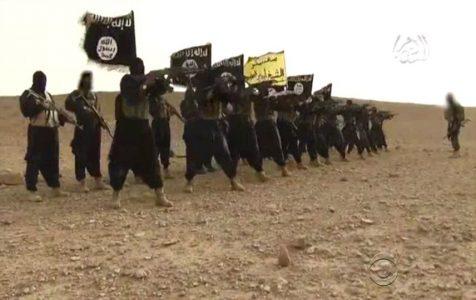
ISIS terrorist group falls back on guerilla warfare
The organization has returned to some of its old tactics in the hopes of furthering the idea that it can never be completely eliminated.
In recent months, ISIS has intensified its attacks on regime forces and supporting militias in the governorates of Deir ez-Zor and Homs, especially in the cities of Mayadin and Al-Bukamal, located in eastern Deir ez-Zor, and the city of Al-Sukhnah, located in eastern Homs.
ISIS has approached its targets from the desert of northern and northeastern Palmyra, in addition to the region of Hamima, south of Deir ez-Zor, which ISIS has adopted as its headquarters. Those areas are the last of the locations controlled by ISIS in the governorate of Homs and the southern section of the Euphrates river in Deir ez-Zor.
All ISIS attacks are targeting checkpoints of regime forces and Iranian militias, which are concentrated on the edges of the southern deserts of the cities of Al-Bukamal, Mayadin and Qoriya. ISIS focuses on the sites located on the edges of the desert due to ease of access through the desert and the need to avoid moving too deep into areas controlled by regime forces, for fear that routes of withdrawal and supply for its fighters will be surrounded and cut off.
Regime forces and supporting militias have lost more than 70 troops in the latest ISIS attacks on Deir ez-Zor and the city of Al-Sukhnah, including Asaad Abu Kassar, the leader of the Iranian-backed Baqir Brigade, as well as four foreign fighters of the Fatimiyoun militia and two of Hezbollah.
ISIS’s retreat to the deserts following its great territorial losses in Iraq and Syria means this strategy of guerilla warfare is its only option left. In its offensive operations against regime checkpoints, ISIS is following a combat approach suiting its military capabilities – namely, surprise attacks on target locations through small, flexible, quick-moving military groups, taking advantage of their fighters’ personal motivation to retaliate following the large loss of territory for ISIS.
This style relies on some of the group’s old military tactics that have proven to be effective, such as attacks during the night and during dust storms. These have undermined the confidence of regime forces and enabled ISIS to move very easily in conditions where air power is rendered ineffective.
After its collapse in Syria and Iraq, ISIS is now trying to assemble its fighters inside the deserts extending between the two governorates of Homs and Deir ez-Zor in the direction of the Iraqi border, in addition to the Western Desert of Iraq – specifically, in the Ghada and Hussainia Valleys and the desert of the town of Rawa. This is similar to the approach followed by al-Qaeda in the deserts of Anbar, after being beaten back by the tribes and the Sahwa fighters in Iraq in 2007.
The author has learned that ISIS has set up secret camps and sites inside those regions, including underground facilities and a network of tunnels in some of the valleys and in the foothills of some of the mountains and hills to avoid any air bombing operations reaching its fighters in those regions.
Guerilla warfare is an area where ISIS has many advantages. The first is good knowledge of the terrain – especially inside the deserts and open valleys. This helps it to form groups working to exploit the land during military confrontations, launching lightning attacks and setting up sporadic ambushes.
Second is the ability to hide, since ISIS relies on fighters of the same demographics in the areas in which it is active, so they do not differ in terms of looks, features, accents and dress, which gives them the ability to hide among the population.
The network of social relations brought by those within ISIS who come from tribal backgrounds also contributes to the execution of attacks and guerilla warfare, in addition to securing shelter when fighters are pursued by security forces. Similarly, the presence of foreign fighters is an advantage, providing ISIS with the weapon of suicide bombers.
Despite this, the ISIS leadership realizes that this strategy of guerilla warfare cannot continue for long, especially with the possibility that its fighters will give up on continuing the confrontation, preferring surrender or escape. So its main objective in continuing militarily, even in the form of small pockets scattered throughout the deserts, is to strengthen the idea that its opponents are unable to eliminate it completely.
This is more about its presence in Iraq than in Syria. The organization aims to build on the notion of defying elimination to try to rally its supporters through the formation of cells in areas it has lost, in anticipation that conditions will eventually arise for it to return to the scene. This is especially the case for ISIS in Iraq because the organization’s origin is Iraqi and its emergence there was partly the result of sectarian strife. It will therefore aim to present itself in Iraq as the only option for a Sunni power facing the various Shia forces.
In Syria, on the other hand, where ISIS does not have roots as deep as those in Iraq, it is more likely that once its jihadist factions there are eliminated militarily, the remaining fighters would join other jihadist groups like Hay’at Tahrir al-Sham.
Source: CM





